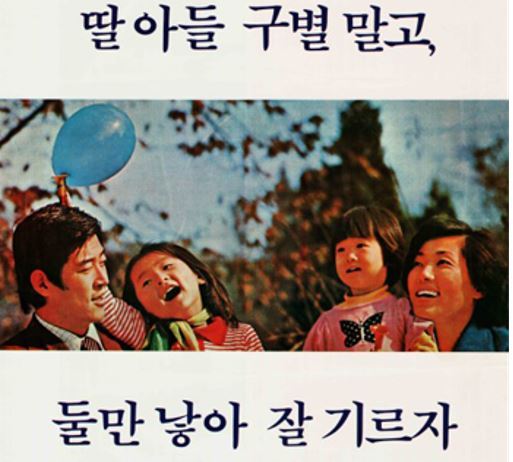 |
This poster, promoted by the government for birth control in the 1970s, urges married couples not to have more than two children. (National Archives of Korea) |
SEJONG -- Seoul has the smallest number of people per household, on average, among the eight major cities across the nation.
The average population per household in Seoul fell to an all-time low of 2.16 -- 9.52 million people in 4.42 million households -- as of September, according to the Ministry of Interior and Safety.
The average household size of the capital posted a noteworthy slide in the last five years, falling from 2.38 in September 2016 and 2.44 in September 2011. Further, the pace toward smaller families has grown faster recently.
Given the figure fell by 0.044 per annum over the past five years, the number of people per household in Seoul is likely to fall below 2.0 by 2025, under the assumption that the shrinking speed would be the same.
 |
(Graphic by Yoon Jeong-soon/The Korea Herald) |
The situation is mainly attributed to the record-breaking portion of single-person households -- 42.4 percent -- 1.89 million of the city’s 4.42 million households had just one member last month.
Based on resident registration data, Seoul has many salaried workers or job seekers, who live alone. Its population per household is expected to further sink in the coming years in the wake of falling marriage rates, record-low fertility rates and a steady increase in the number of the elderly residing alone.
Among the eight major cities, Busan had the second-smallest average household at 2.18, followed by Daejeon with 2.2 and Gwangju with 2.24.
The figure was relatively high in Ulsan, at 2.33, and the highest figure, 2.43, among the 17 major regions was in the administrative city of Sejong, where the proportion of single-person households is also the lowest.
Many civil servants -- even those working in Sejong, where the largest government complex is located, or staying there on weekdays -- are registered as living in other regions, such as Seoul, Gyeonggi Province or Daejeon.
Data showed that the population per household is generally in inverse proportion to the average age in regions.
South Jeolla Province -- whose population per household is the lowest (at 2.04) among the 17 regions -- was also the oldest region, with an average age of 47.3 as of September.
North Gyeongsang Province posted 2.07 people per household (second-lowest) and 46.7 years (second-oldest). Next on the list were Gangwon Province with 2.07 and 46.3, respectively, and North Jeolla Province at 46 and 2.12.
Sejong residents were youngest at an average age of 37.7 years old, while the next youngest populations were in Gwangju, 41.7, and Gyeonggi Province, 41.8.
The typical family had four members from the 1970s to the 1990s, but the percentage of four-member households has shrunk significantly over the past decade.
According to the Interior Ministry, four-member households accounted for 3.4 million of the nation’s 23.4 million households last month, marking an all-time low of 14.5 percent of the total.
In contrast, the combined portion of single-person, two-member and three-member households exceeded 80 percent this year for the first time since the nation started compiling relevant figures.
As of September this year, their percentage came to 80.9 percent: 18.93 million of the total 23.38 million households nationwide.
By Kim Yon-se (
kys@heraldcorp.com)



![[Breaking] North Korea fires short-range ballistic missiles: JCS](http://res.heraldm.com/phpwas/restmb_idxmake.php?idx=644&simg=/content/image/2024/11/05/20241105050038_0.jpg)





